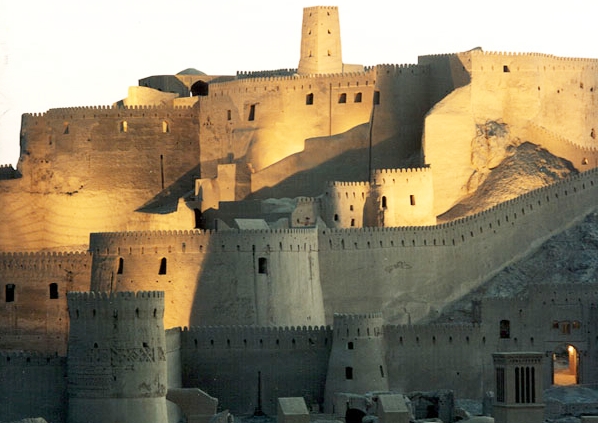Built around 500BC, the citadel of Bam was hit by an earthquake which totally devastated the city of Bam, in the desert province of Kerman. The quake demolished 90% of this invaluable architectural monument, but revival attempts, which started almost immediately after the quake, have accomplished the rebuilding of the citadel through a combination of traditional and modern methods of reconstruction. The initial efforts sought to restore the castle’s strength and save its historical identity and colour as well.
In the reconstruction process, different academics and experts participated in a multinational workshop to erect the citadel anew; now, after many years, the citadel is ready to reclaim its past glory. The testimony to this is the flow of large tourist groups who come to Bam daily just to behold this gem of the orient. Estimates show that 99% of the historical citadel has been restored to its former structure, with efforts still underway in other parts.
Afshin Ebrahimi, head of Bam International Heritage, an NGO which registered the citadel in the UNESCO World Heritage List, told Mehr that the restoration work would give the public access to the office and the Governor’s Seat (hakim neshin), as well as the first porch of the Citadel. He was satisfied with the reconstruction process. “The reconstruction has turned the Citadel into one of the largest architectural workshops ever in restoring a historical monument and the embodiment of a national solidarity and collaboration to restore a monument of a long-gone civilization. We predict swarms of tourists making their way to the citadel by next New Year’s Eve (21 March 2017); however, to make that a reality, we need much-required resources to reinvigorate the construction process, instilling hope to the body of the ancient giant building.”
“The Governor’s Seat is the highest point in the Citadel, with breathtaking views of the landscape and the city itself. Almost 99% of the rubble has been cleared, with strengthening and bolstering of the building to follow. In the course of the restoration, research and technical work has been regularly carried out, since the rubble was the most valuable part of the Citadel, giving researchers rare historical information as to the origin of the rocks and the adobe used in the building,” he explained.
Reza Ashk, the city Governor, reminds us of Bam just after the earthquake remains a painful memory for many inhabitants, with the death of loved ones and the public mourning of the Citadel. “In 2003, the Citadel was demolished by the quake; this struck the people with grief and despair, since the Citadel was a source of inspiration and symbolized life in the middle of the desert. Now, however, these efforts are coming to fruition, and local people are feeling excited about seeing the newly restored building. The international welcome has been satisfactory, and the city’s airport has contributed to this influx of tourists, bringing in more foreign tourists than ever.”
“The news of the opening of the Citadel stole the headlines during the New Year holidays, when for almost two weeks, the Citadel saw thousands of tourists coming and paying homage to this monument. The Citadel still awaits world recognition on the UNESCO World Heritage List,” Ashk concluded.
